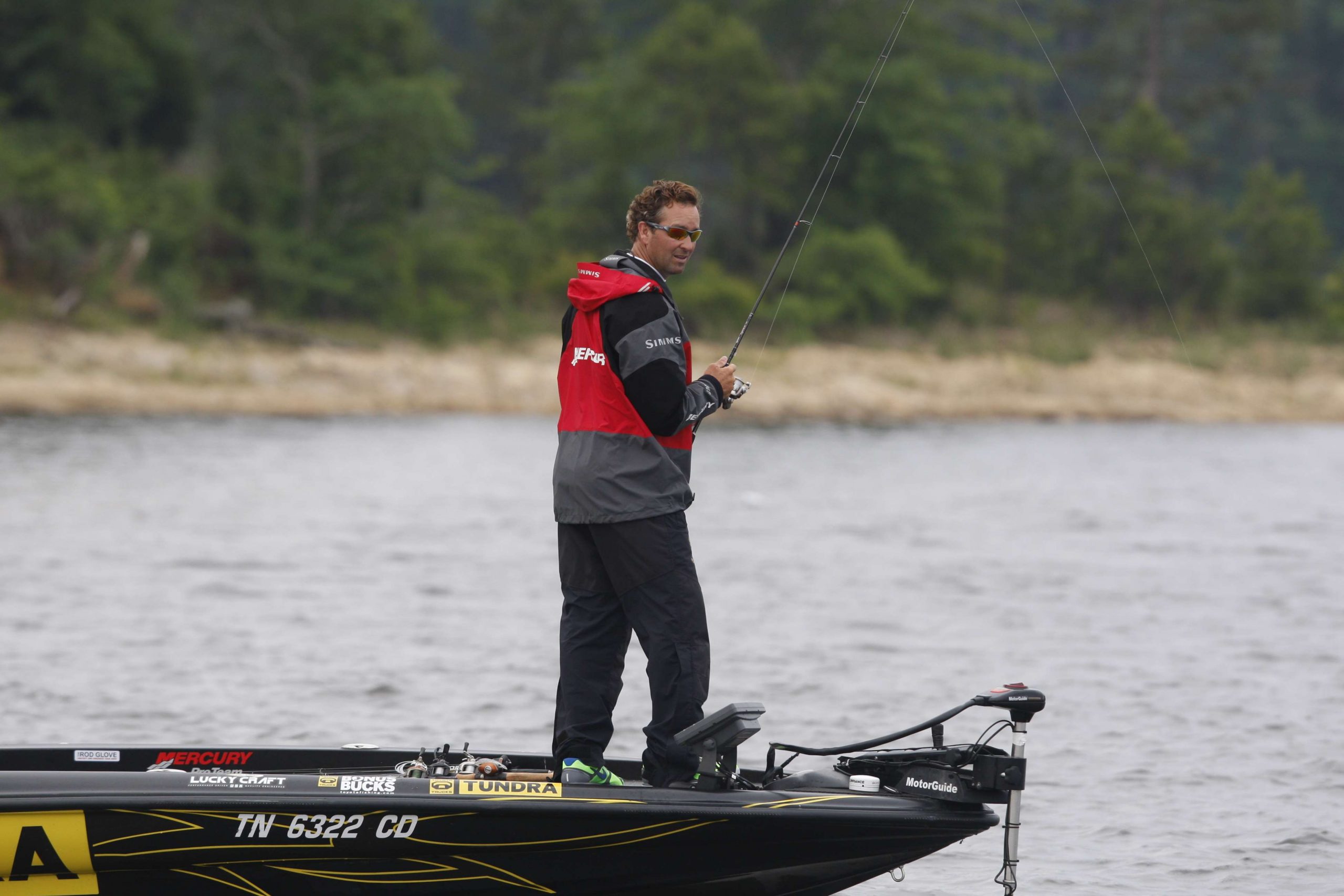
During most of the year, a simple rule influences bass fishing: Find the bait, and you’ll find the fish. Winter throws a knot in that line by making it much tougher to locate the chow. Without a definitive game plan, cold days can turn into a whole lot of looking with not a whole lot of fishing.
“It gets a lot harder to follow the bait in the wintertime,” says Alabama pro Gerald Swindle. “This is the hardest time of year to follow the schools.” Granted, baitfish numbers expand greatly once warm weather returns, but there’s still plenty of finned forage to be found in the year’s first quarter.
For Swindle, it’s all about dialing in the spots where baitfish will feel most comfortable. In reservoirs, his prime winter targets are the bottoms of creek channels. Anywhere he finds a creek dumping into the main channel, Swindle expects to find bait gathered at the lowest point of that drop.
On warm days, baitfish may move up to the shallow channel edges, but the rest of the time, they’re hanging low. One of Swindle’s key baits is a 1/2-ounce jigging spoon (silver for sunny days, white for cloudy) fished on 12-pound Vicious fluorocarbon. More often, though, he’ll stick a green pumpkin Zoom finesse worm on a 1/4-ounce shaky head and fish it on 8-pound fluoro. “I’ll just drop it right down in them and just use my boat to move it,” Swindle says. “I just barely shake the rod tip, and I’ll turn my trolling motor on low and move around looking for fish and dragging that shaky head under the boat.
“Remember, at this time of year, less is more. The smaller the bait and the less you work that bait, the more fish you’re going to catch.” In lakes with no defined river channel, Swindle expects to find the baitfish in the bottoms of deep rocky pockets. Typically, the forage will establish a comfortable depth range that will remain consistent through most of the lake. During sunny periods, the bait will adjust their depth by moving toward or away from the shore, rather than higher or lower in the water column. “You can take your depthfinder and pattern those fish,” Swindle says. “If you find them in 30 feet in one pocket, when you go to the next pocket, you can bet they’ll be in 30 feet. If you get a warm, pretty day, just follow the shad farther into the pocket.”
In this scenario, Swindle drops down to a 1/4-ounce spoon. In exceptionally clear water, he’ll fit his spoon with a white or chartreuse bucktail for a more enticing package. For the shaky head approach, he replaces the finesse worm with a Zoom Critter Craw in green pumpkin or pumpkinseed. “A lot of times, I’m around a big school of bait, and the bass bite that craw as good as they’ll bite anything,” Swindle says.
Speaking of crawfish, the real mudbugs create an alternative to hunting winter bait schools. As Swindle notes, sometimes the best bait you can find is the bait you can’t see. “When everyone else is looking for bait on their depthfinder, if you get any sun on those clay banks, those crawfish will start poking their heads out,” he said.
Swindle takes advantage of this situation by flipping a 3/8-ounce Arkie Jig with a green pumpkin Zoom twin tail. When the water drops below 50, he’ll go with a Critter Craw trailer, as this bait’s minimal action makes a better fit in the chilly stuff. If bass spit up their recent crustacean meals, Swindle notes the color and size for clues on trailer selection and jig modification. “If they spit up smaller crawfish, you can keep your skirt trimmed a little tighter. But if you catch a big 4-pounder, don’t be afraid to put a big trailer on that jig.
“Just pay attention to what they’re spitting up, and that will teach you how to trim that jig.” Even when the bait and bass cooperate, winter fishing is still winter fishing, and contending with the elements can become the day’s toughest challenge.
Comfort is one thing, but then there’s the fundamental principle of performance. Swindle’s in no hurry to sacrifice either. “The biggest thing you fight in the wintertime is staying warm,” he says. “Guys lose feeling in their hands, and if you can’t feel your hands, 90 percent of the time you can’t feel the fish.
“I don’t care if anyone calls me a wimp; during the wintertime, I carry a Little Buddy propane heater on my console. I decided that I’d rather be comfortable and catch a few fish than be miserable. When my hands get cold, I just sit down at the console and warm them up again.”
Originally published January 2011





